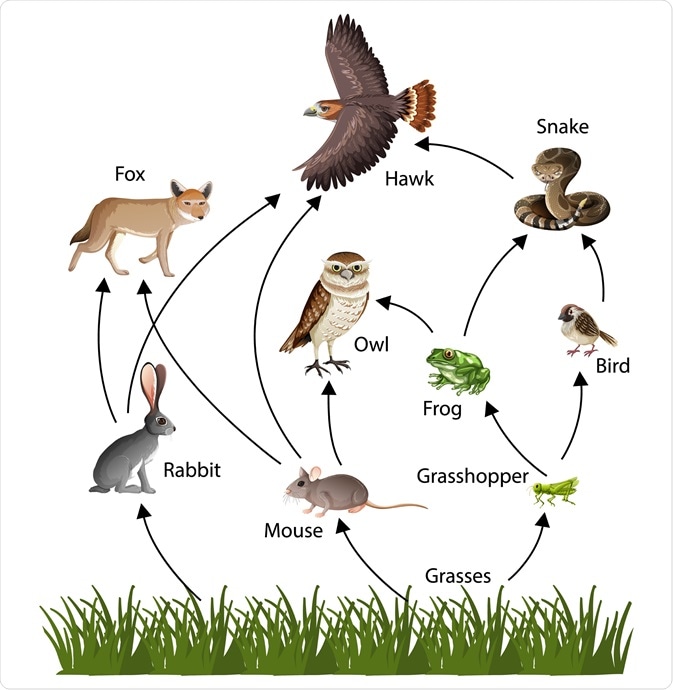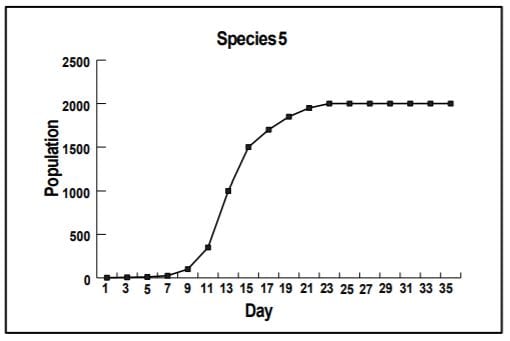This is how one bird species that feeds on large seeds is able to coexist in the same tree as a bird species that feeds on small seeds.
They occupy different niches
Identify the herbivores in this food web.

Rabbit, Mouse, Grasshopper
This process puts excess carbon dioxide into the atmosphere in the carbon cycle.
Fossil Fuel Combustion
This is the process by which humans have caused Earth's average temperature to increase too much.
Global Warming
This term describes species like kudzu, which is from China, but was introduced to the US to help prevent erosion, but now grows out of control.
Non-native / Invasive Species
Two bird species living in the same field and eating the same foods would have this kind of relationship.
Competition
This is the primary role of bacteria and fungi in an ecosystem
Decomposers
These organisms are able to take nitrogen out of the air and convert to a form that plants can take up.
nitrogen-fixing bacteria
This process is primarily responsible for global warming.
What is the carrying capacity of this population?

2000
Bees have this kind of relationship with plants.
Mutualism (bees get nectar while they pollinate the plants)
This percent of the energy available to the grasshopper will be passed on to the frog.

10%
This process removes carbon dioxide from the atmosphere in the carbon cycle.
Photosynthesis
This gas is primarily responsible for global warming.
This type of population growth is illustrated in this graph.

logistic (S-curve)
A flea in a dog's fur feeds on blood from the dog.
Parasitism
Describe the relationship between owls and snakes here.

Competition
Nitrates
This process refers to precipitation with a pH below 7 that falls and kills fish and plants especially.
This is why diseases spread more quickly in large cities than in rural areas.
Higher Population Density
This is the relationship between a rabbit living near a field of clover which is eaten by an owl living near the same field.
predator (owl) - prey (rabbit)
This is the trophic level of the fox in this food web.

Secondary Consumer / Heterotroph
This is the term for evaporation of water from plants in the water cycle.
Transpiration
Deforestation can lead to this problem, without roots of plants to hold the soil in place.
erosion / run-off
What process is illustrated by this diagram, showing the concentrations of a pollutant in a food chain.

Biomagnification